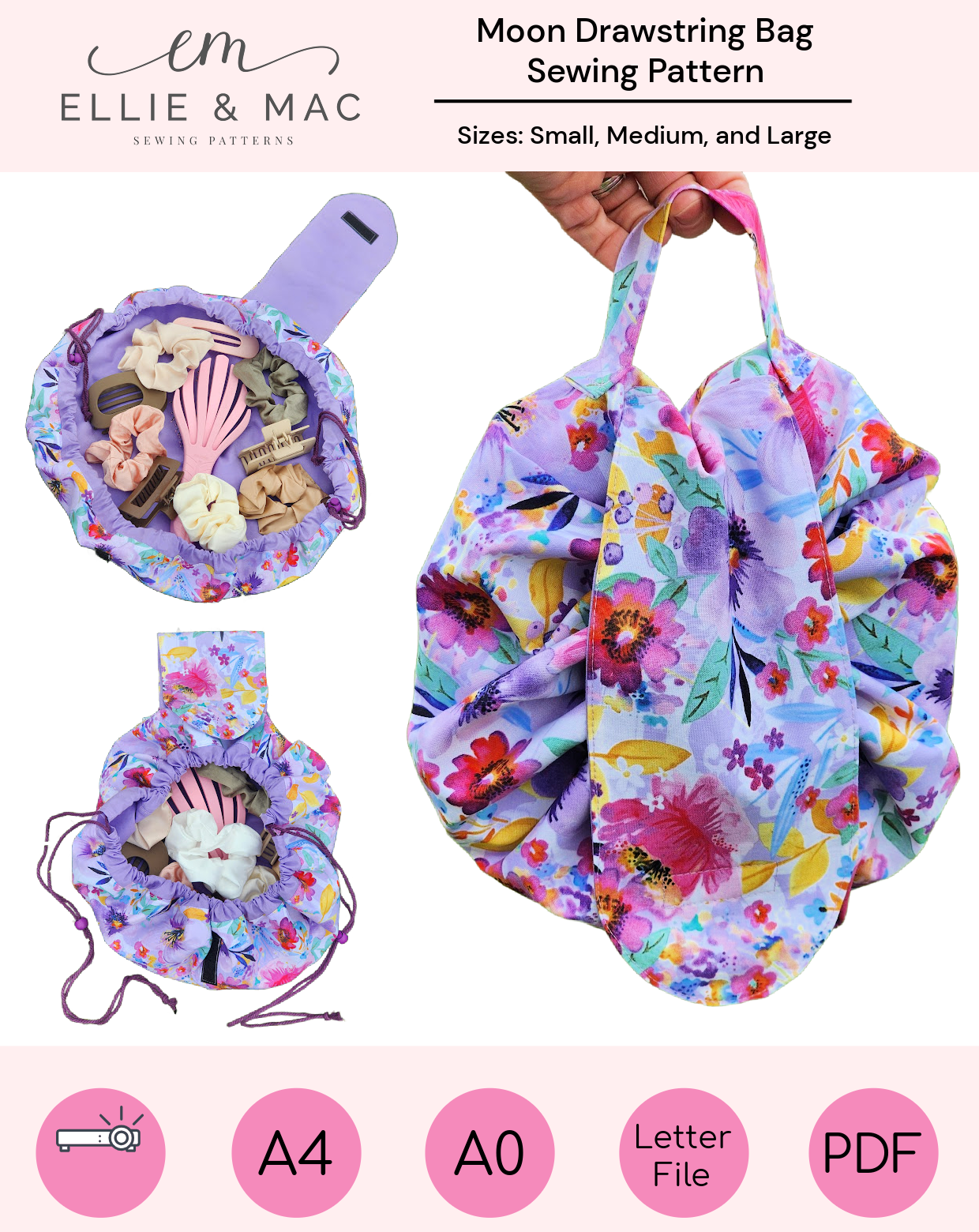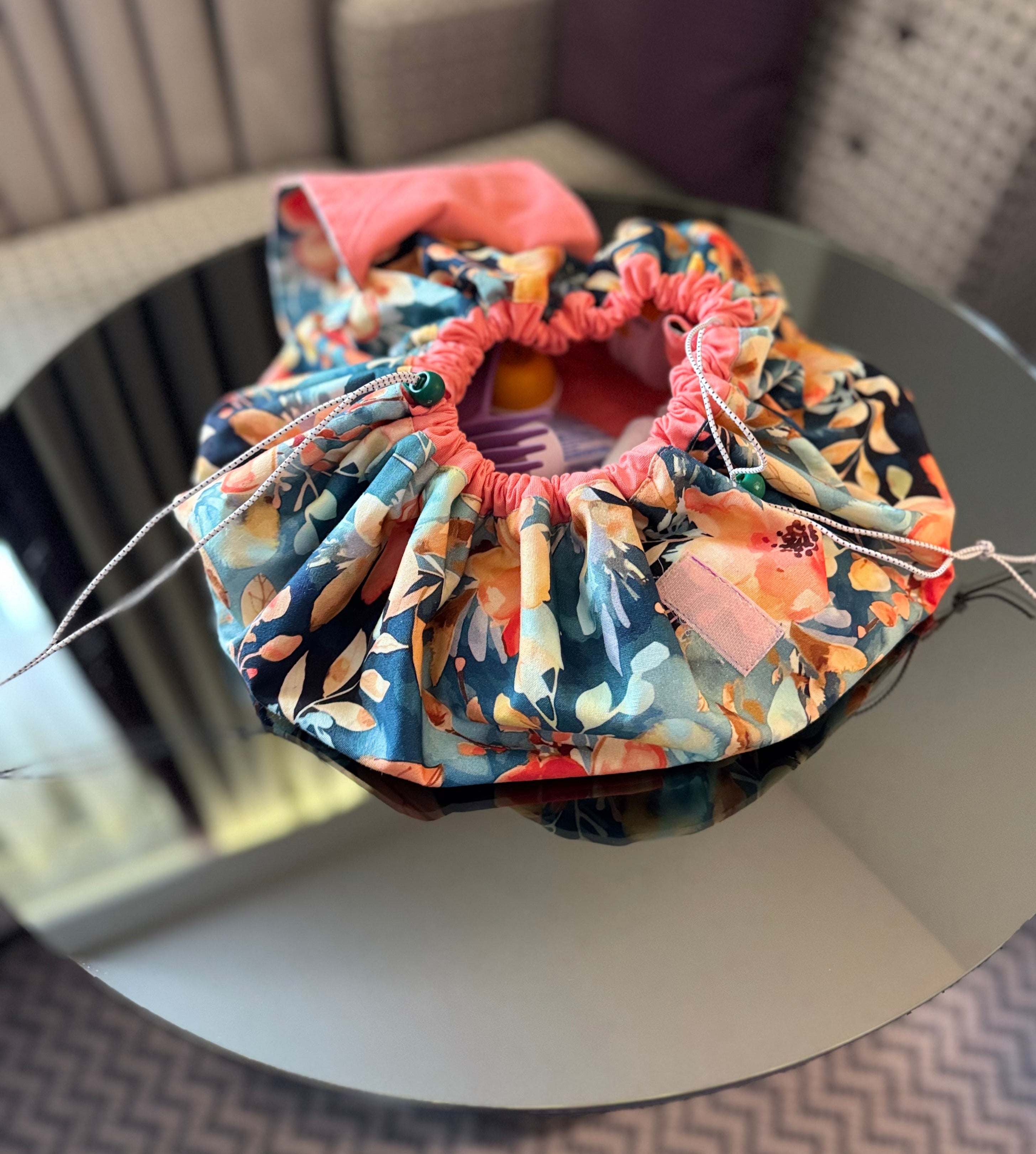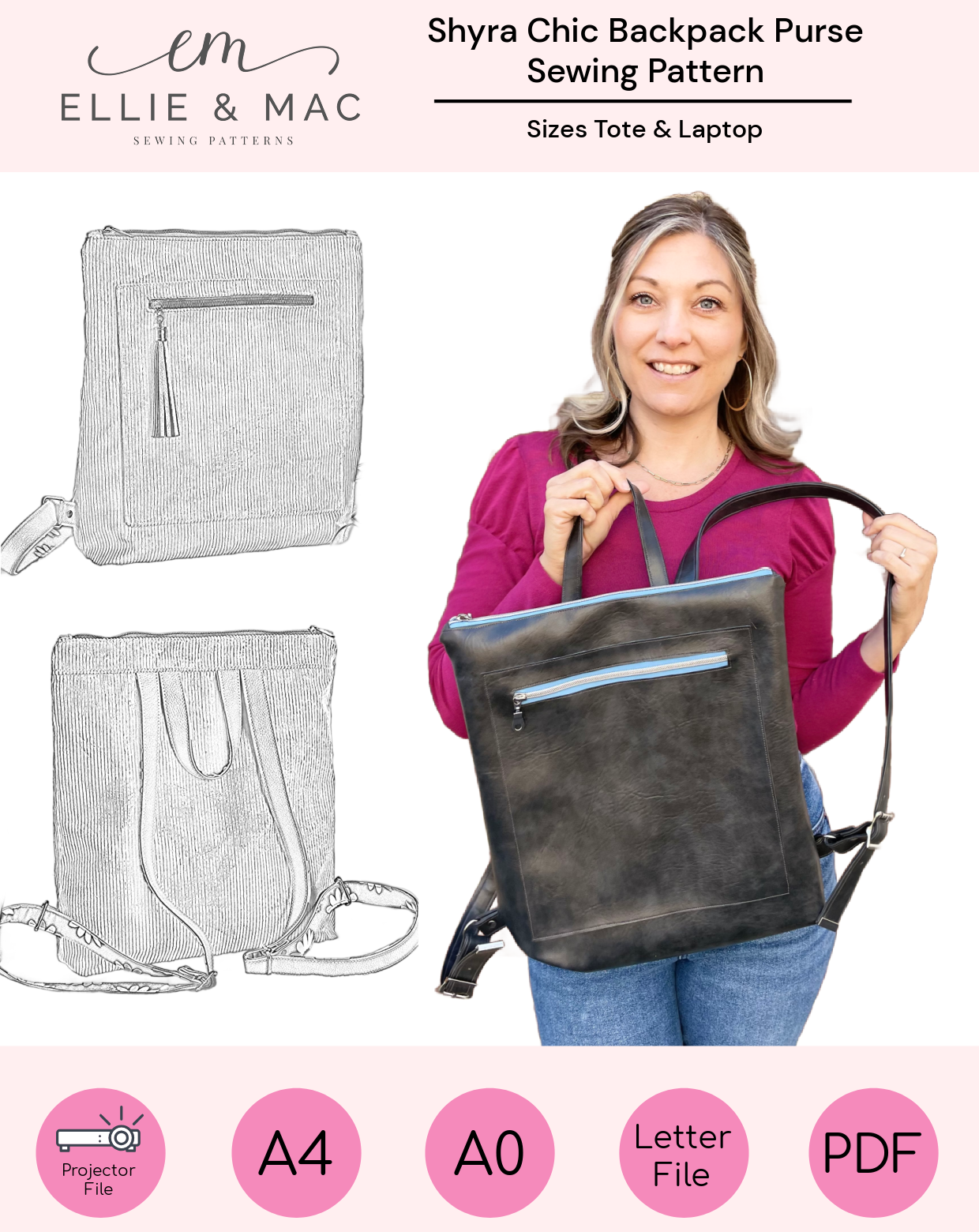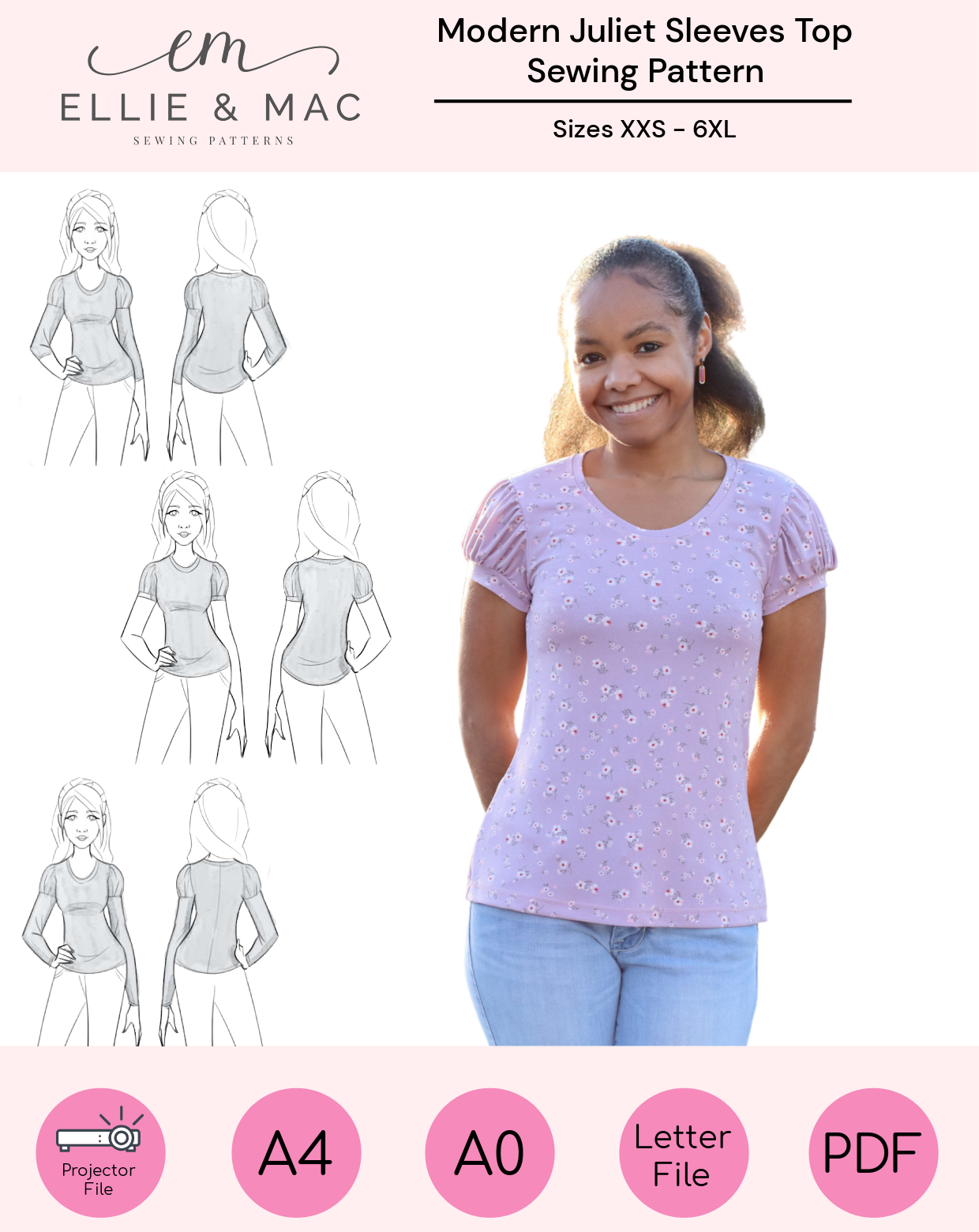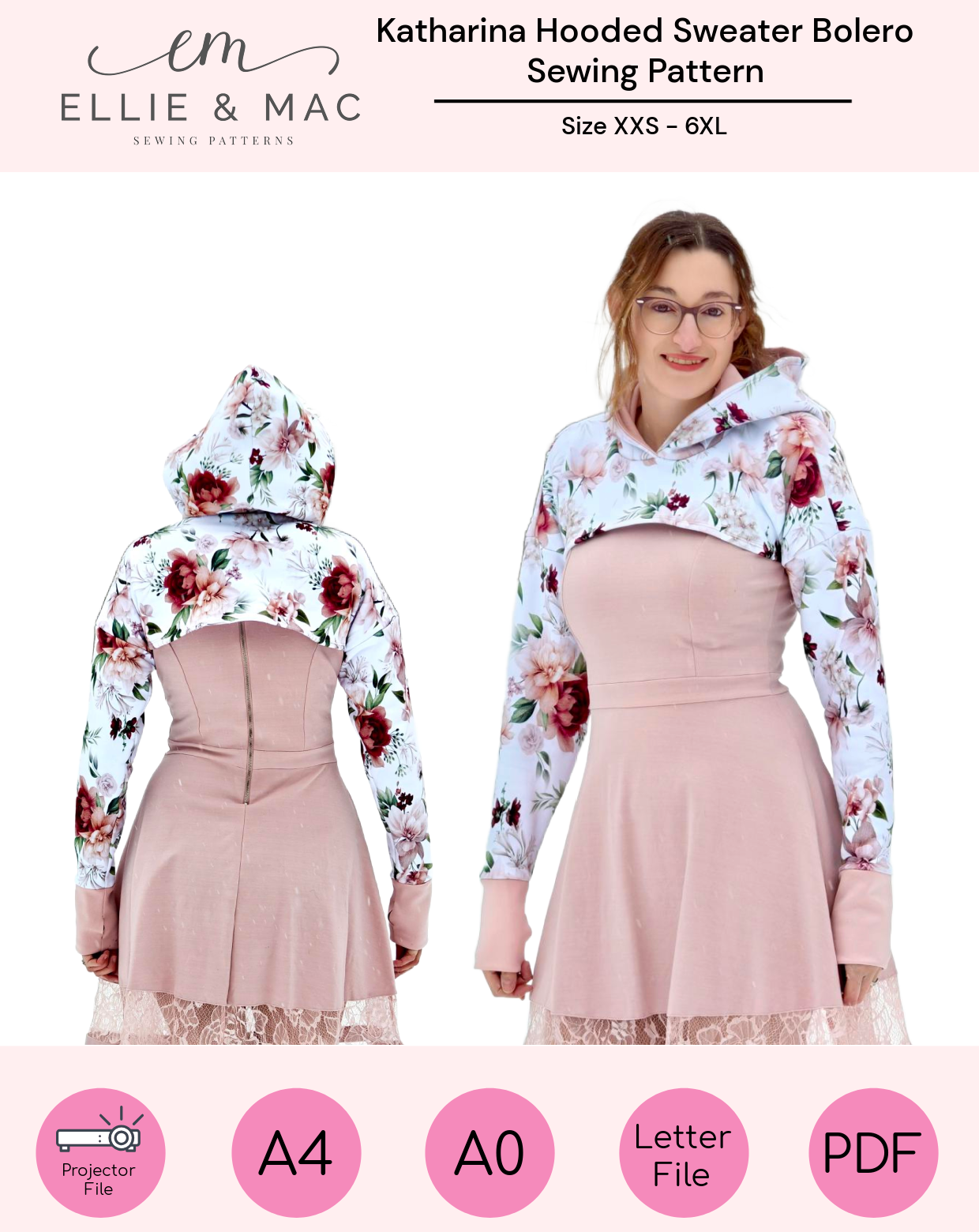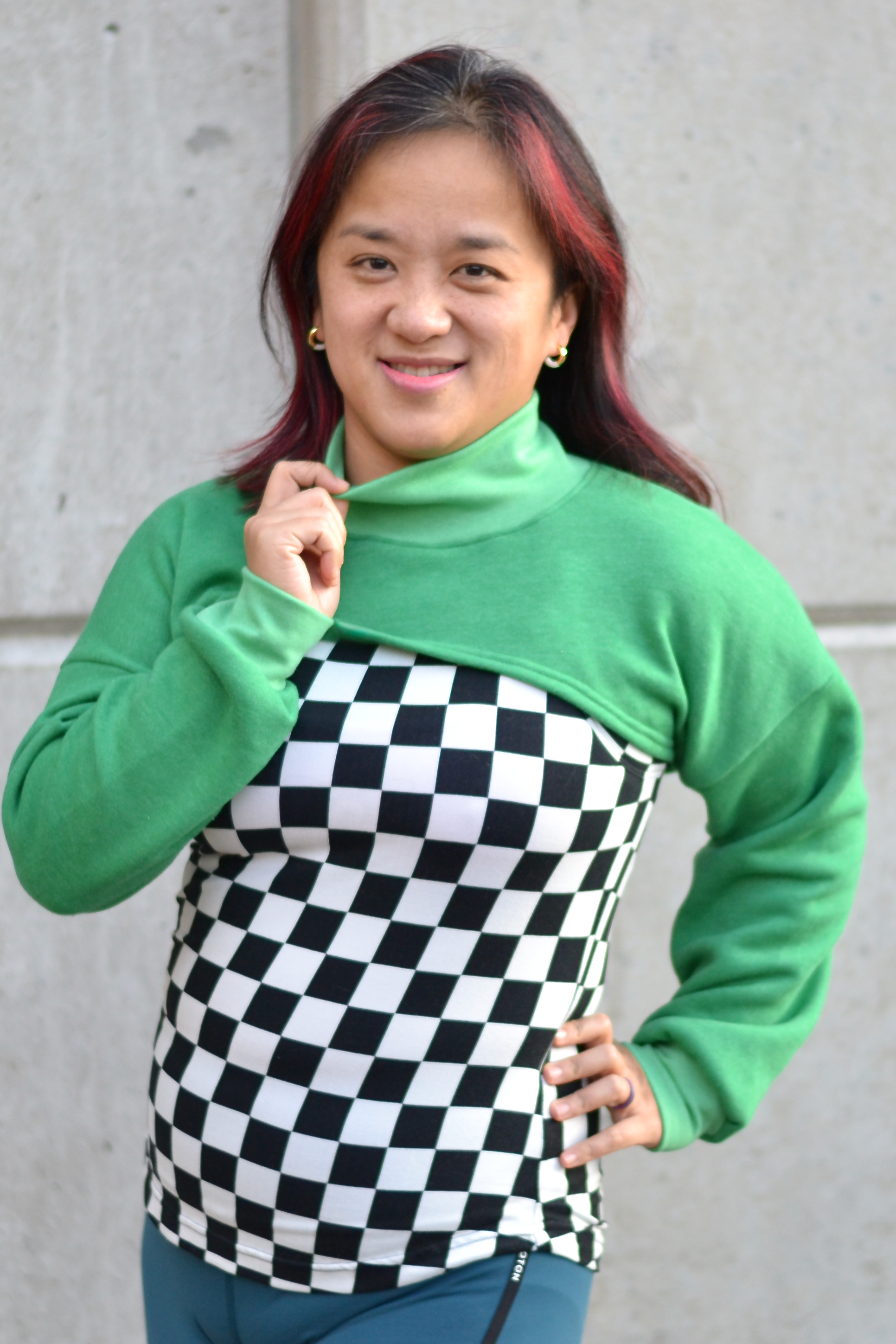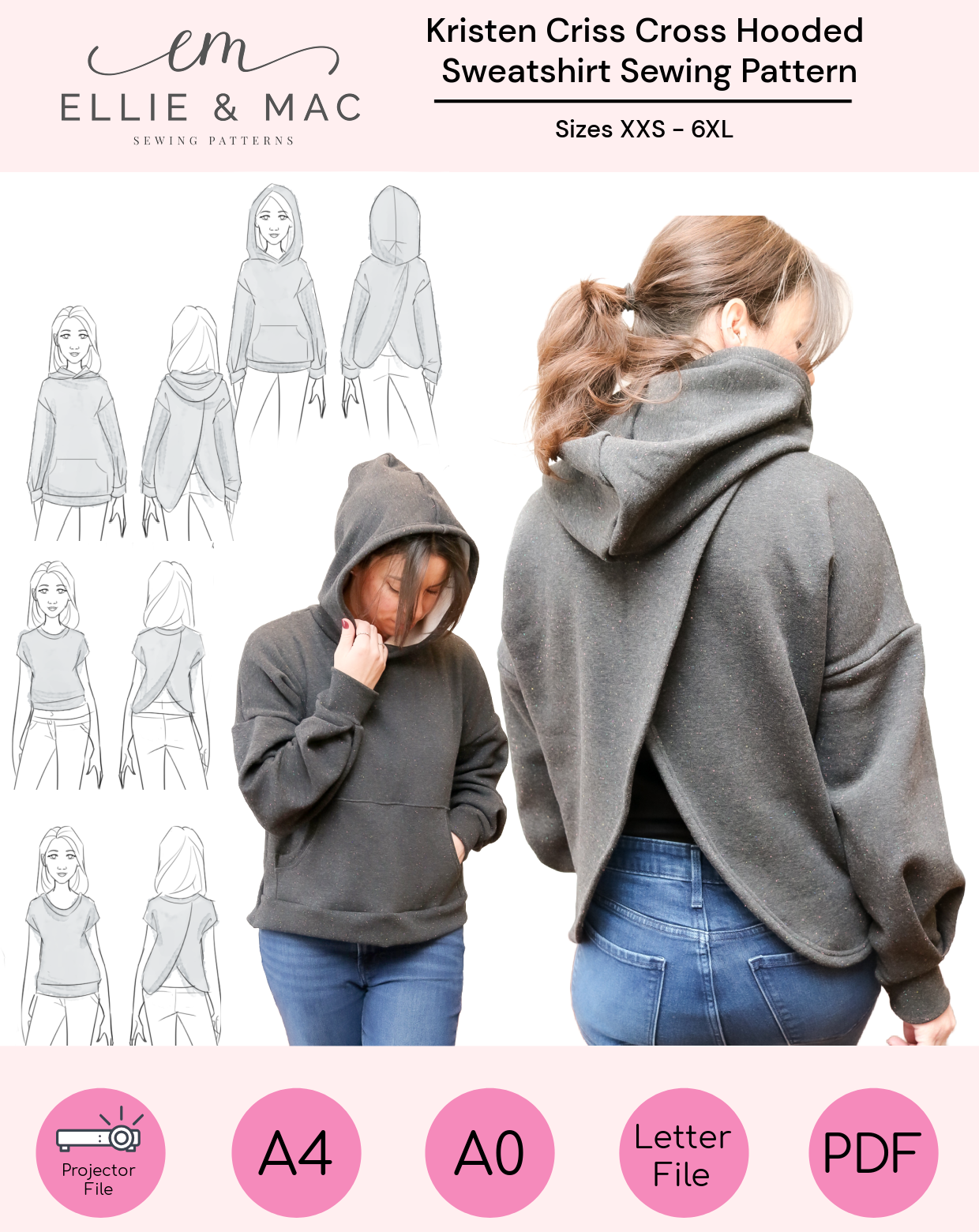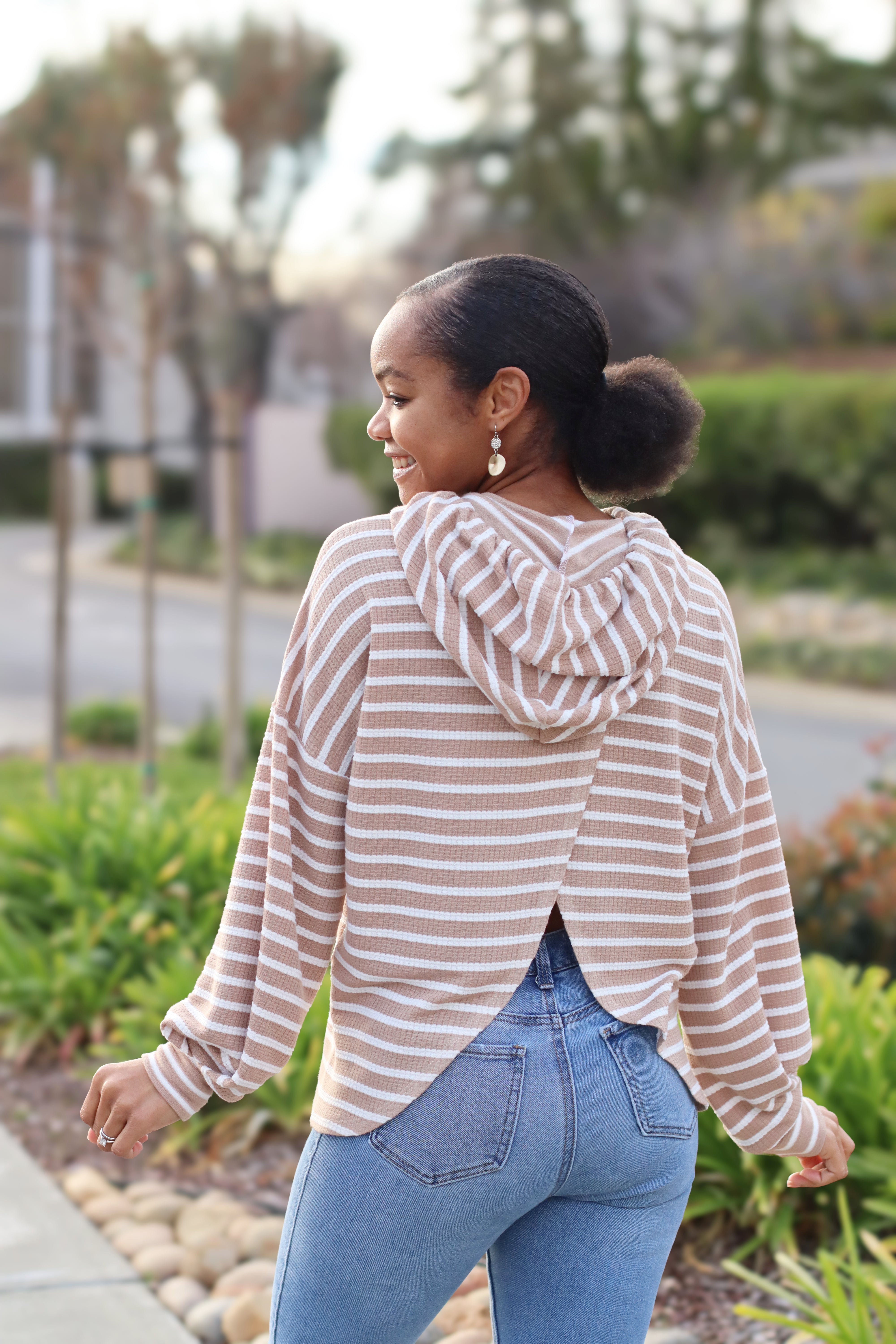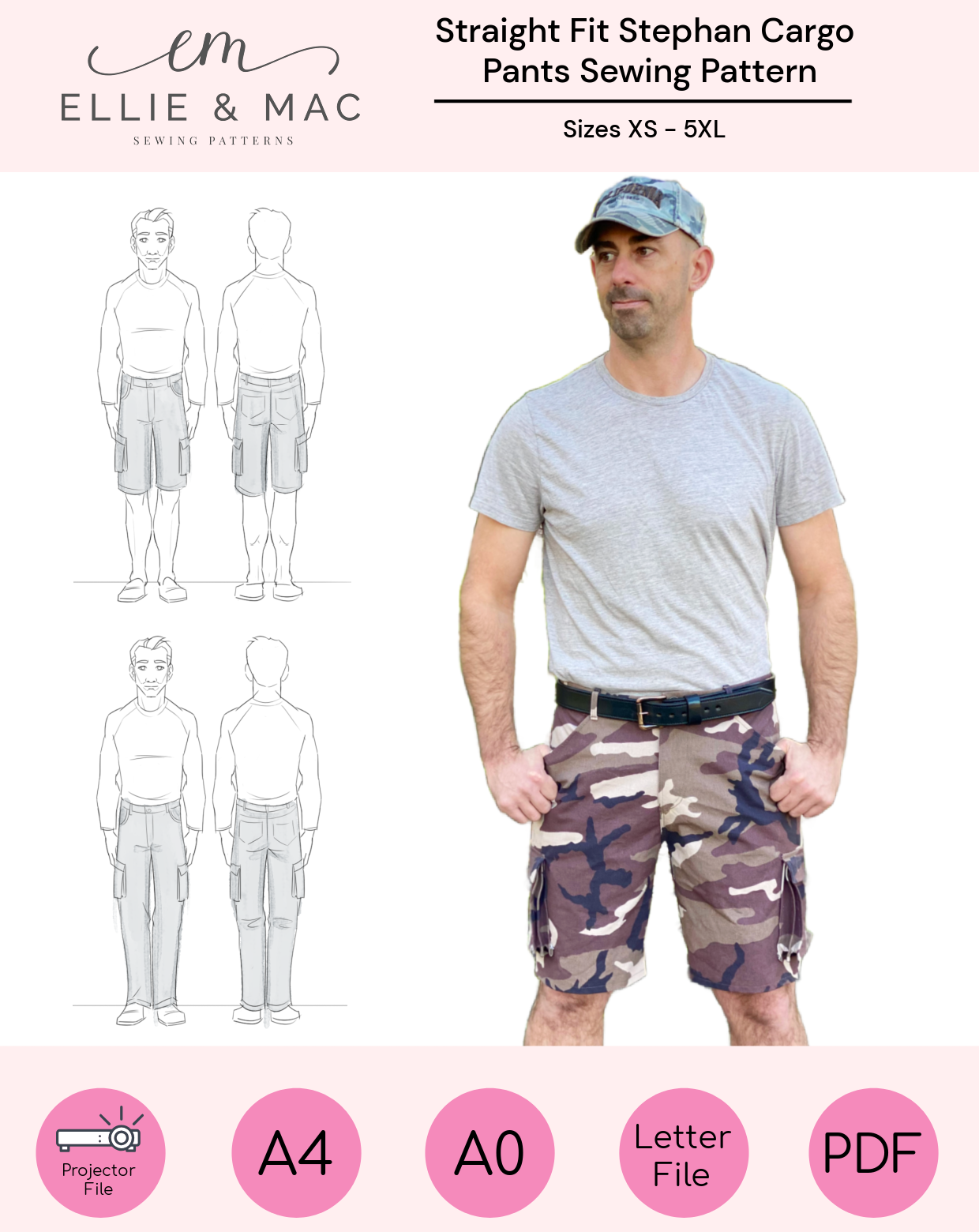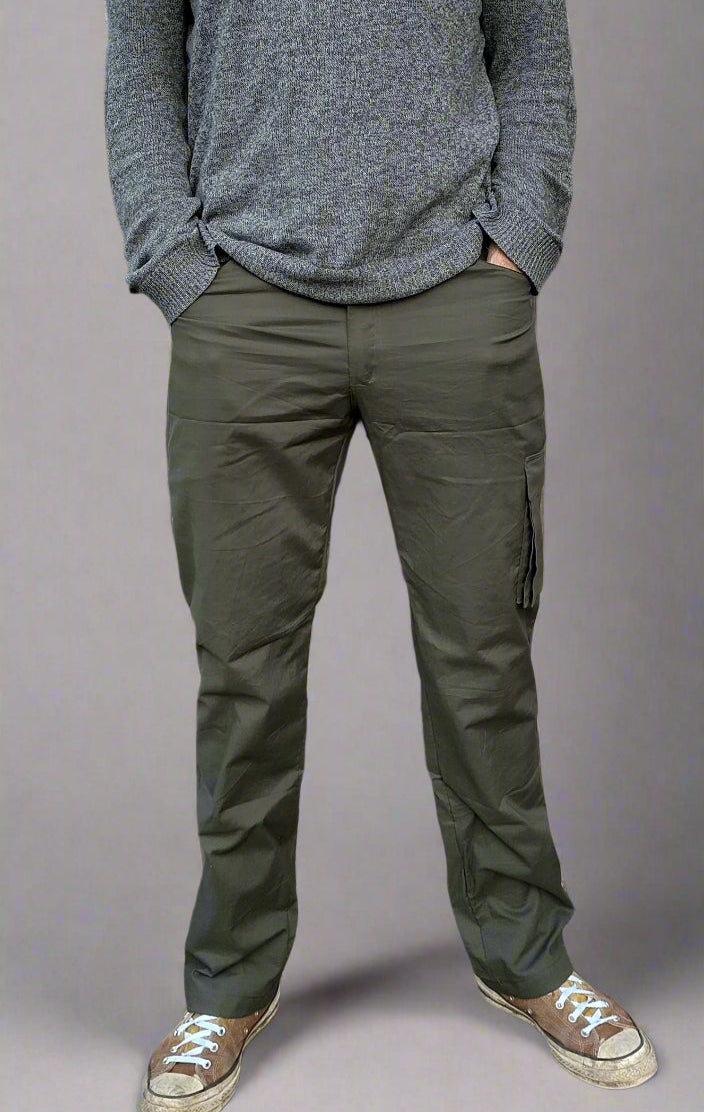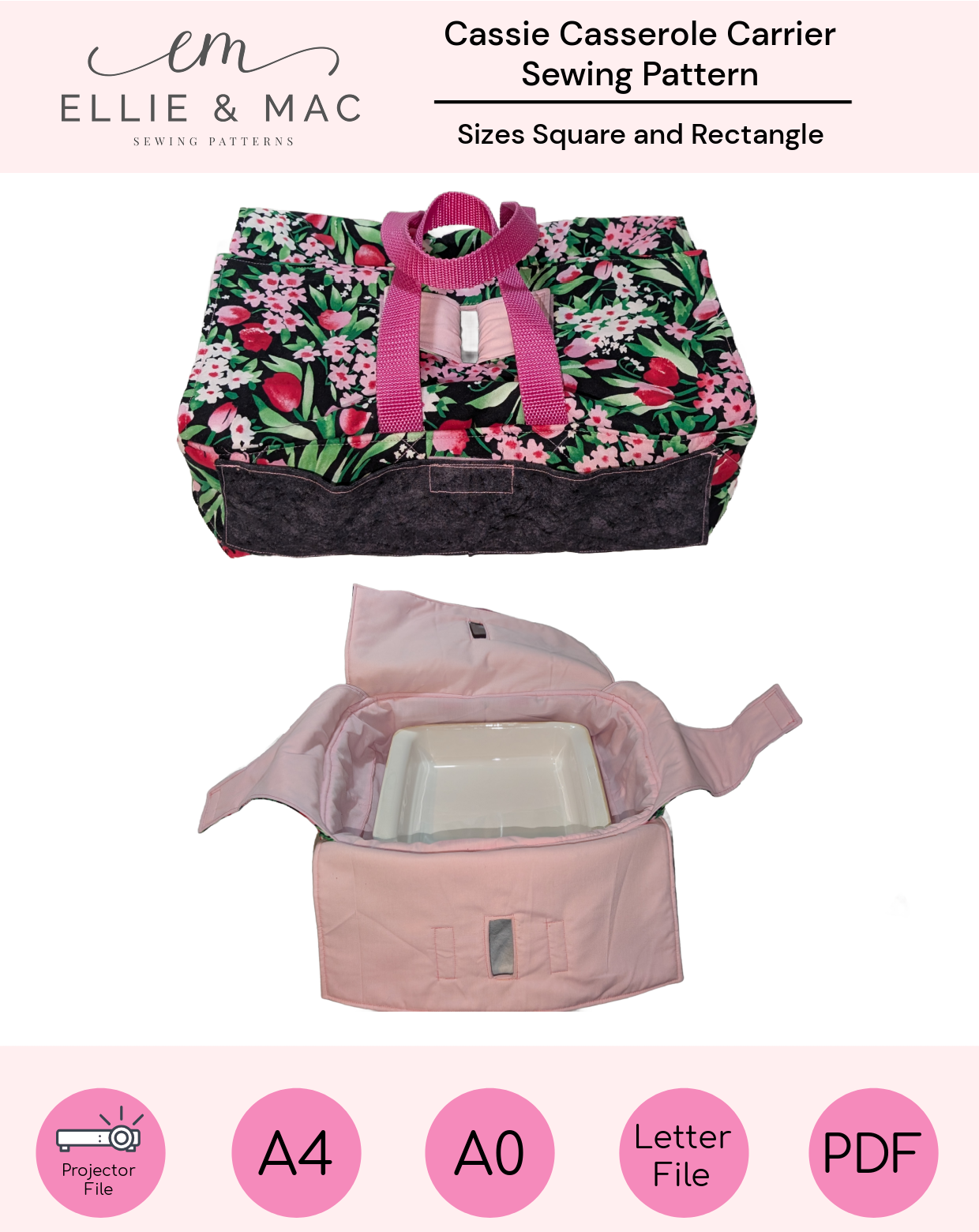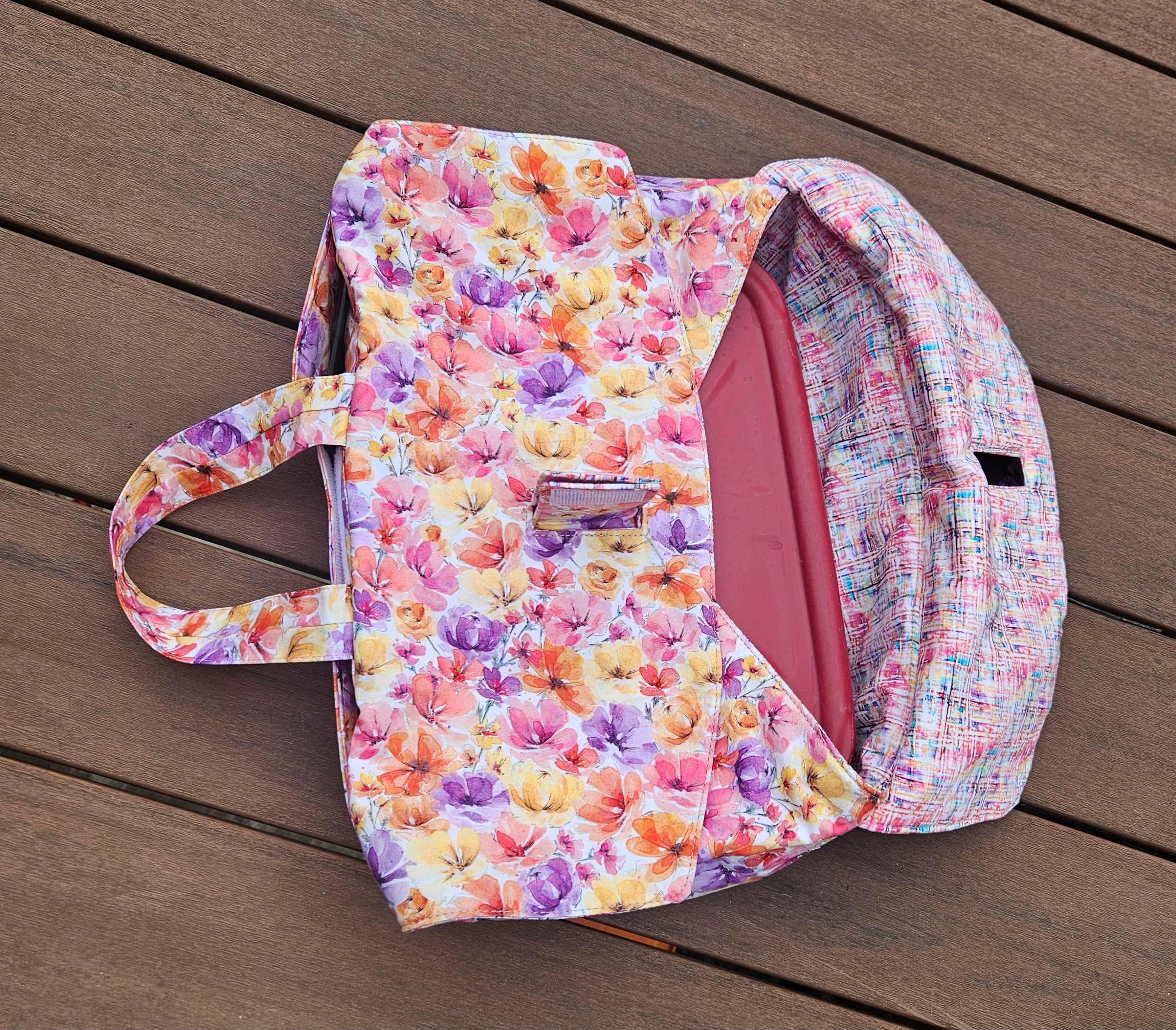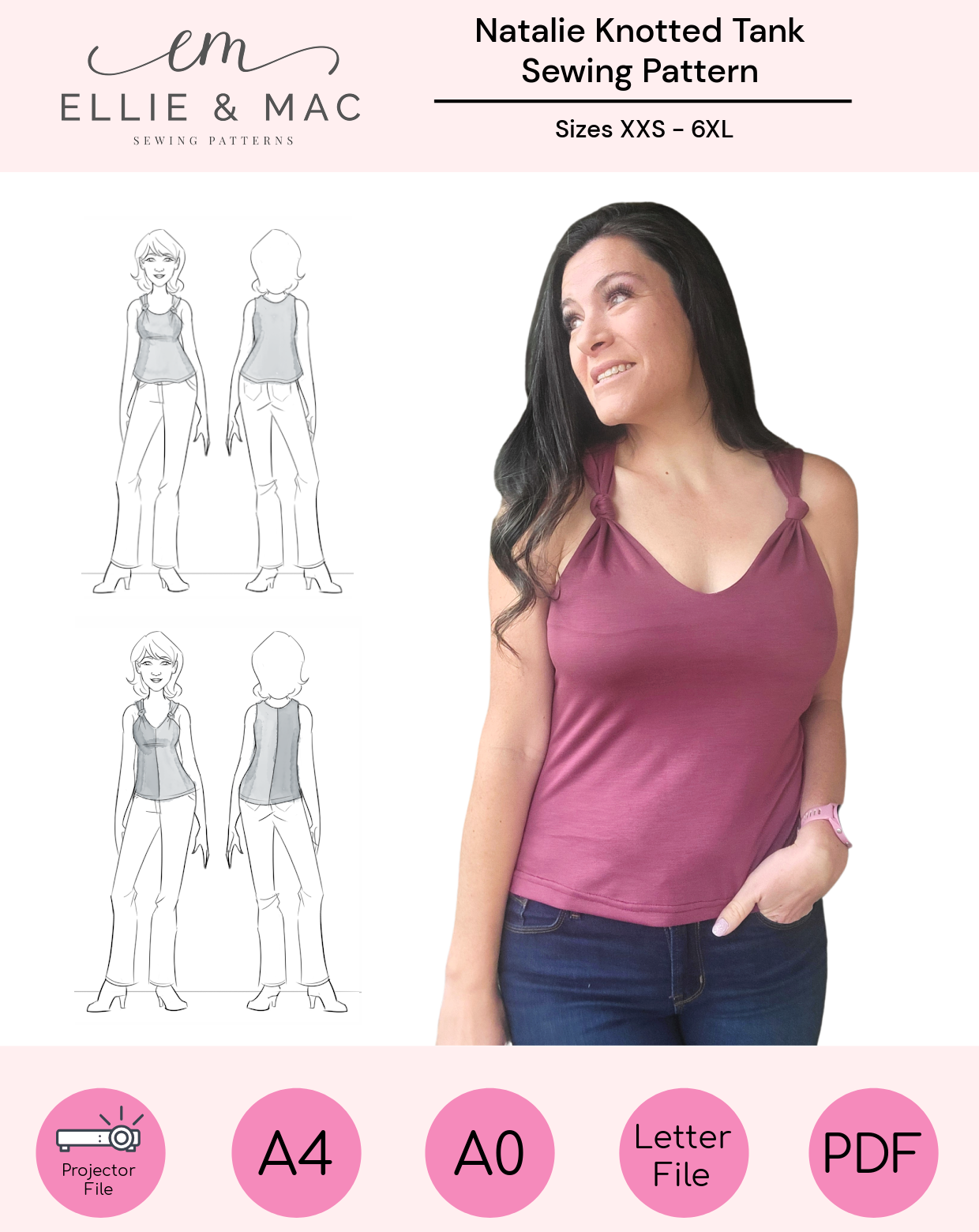
Hi everyone, it's Lakeisha from the Ellie and Mac admin team and the face behind Sincerely, Shantelle. Today I will be showing you how to turn the Tuesday Hoodie into an unlined zip-up jacket instead of a pullover. I have been so excited to share this one ever since I thought of it. Though the Tuesday Hoodie is a Straight Fit pattern, I love the lines of it and find that when it's adjusted, you can still get a comfy hoodie on a curvy figure. I had tons of pastel-colored French terries on hand and knew my eldest would loooove a new hoodie for our cooler temps that are right around the corner. This was the perfect pattern to use!

This hack may seem time-consuming, but it will be really easy (if you have conquered your fear of zippers), and doesn't require many adjustments to the pattern. Just make sure you are following the notes for what's cut on fold and what's not, because that will be the major change required for this to work out nicely. In addition to the pattern, you will need a separating zipper (the length will depend on the height and adjustments for your wearer. It is easier to purchase a long zipper and trim to fit). On average, you will need between a 22-28" zipper. In addition to the zipper, you will need some fusible interfacing, which I prefer to use knit interfacing, two grommets or eyelets for the hood (which can be sewn as buttonholes, if preferred), hood neckline binding, optional zipper binding, and pre-made drawstring or a long strip of fabric to create your own. Go ahead and have all of your adjustments done to the pattern pieces for height/width, etc. Note: if using fabric with low stretch for the waistband, you will likely need to add a few inches to the length of it, or it may need a loooot of stretching to fit the hem. I would cut it with 3-4" extra and just trim later if it's too much.
Pattern Mods
For the pattern modifications, you will need to add 3/4" seam allowance (or whatever seam allowance you choose to use with your zipper) to the fold line on these pieces: the upper front, front middle, front bottom, pocket. On my own paper copies, I do this by adding colored construction paper so I clearly remember the pattern piece has been adjusted, and so it's very easy to slide over to the fold line to cut the back pieces on the fold. For the style hood, I am demonstrating in this blog, I adjusted by measuring up 2", over 1.5", and drawing a gradual curve from the top corner, to the area where the two lines intersect. I then trimmed away the excess paper for my new hood shape. Also, due to the shape of the hood, I removed 1" from the front neckline so it wouldn't be too high by just drawing a new line that's dropped and gradually blended with the existing curve.



Pattern Pieces
Once I have added the seam allowances and modified the hood, I also like to cross out the cutting notes and write my own so I don't forget (as shown on the pattern pieces above). Front upper will be cut 2 mirrored for the front neckline with the extra seam allowance. The back upper will be cut one on fold without the extra seam allowance for the back neckline. Front middle will also be cut 2 mirrored with the extra seam allowance and the back middle will be cut on fold without the extra seam allowance. The front bottom will be cut 2 mirrored with the extra seam allowance and the back bottom will be cut on fold without the extra seam allowance. Pockets are cut two mirrored with the extra seam allowance.

Bodice Fronts
Sewing will be very similar to the original instructions in the beginning, except you will have to do the front pieces 2X, since you now have a left and right side instead of a single front. Prepare each pocket, then sew each one to the bottoms, the middle to bottoms, the tops to middles. Construct your back bodice in the same way. Though topstitching is always optional, I highly recommend it for zippered color block pieces. I feel like it helps the zipper installation go more smoothly and things line up more nicely. Down the front center on the wrong side, apply a 3/4" wide strip of fusible knit interfacing to stabilize the area the zipper will be sewn. Sew front to back at shoulders seams, add the sleeves, close up the side seams, and add sleeve cuffs.

Waistband
Next, we will attach the waistband. Apply 3/4" wide strips of interfacing to the wrong side of both edges to help give stability to the edges that will support the zipper. Fold the waistband wrong sides together and press. Mark the center of the band and back bodice with pins or clips. Aligning the raw edges, pin or clip the waistband to the bodice, stretching it to fit the entire hem. I am using ribbing here, as I find that gives a very nice waistband on zip-ups. If you cut extra fabric for your waistband as mentioned before, and find that waistband isn't needing to be stretched at all and is too long, trim some of the excess fabric off and pin or clip in place again until it looks nice. Press the waistband seam up toward the bodice. Again, I highly recommend to topstitch this seam in place.

Hood Main
Now we prepare the hood. Apply 3/4" wide strips of interfacing to wrong side of all hood pieces at the front hood tips to provide support to the zipper and make it easier to sew. Note before continuing; some may find it easier to add the casing and grommets later after the jacket is close to being finished. I am one of those people. These steps can be done now, if you prefer to get them added before the hood is sewn to the jacket, so I am including them now. Measure out a casing (I wanted 1.25" wide), and mark it in your preferred method, keeping in mind the 1/4" SA along each edge. Illustrated with the red marks is where you want to avoid. Those will be your seam and zipper allowances. Apply a small rectangle of knit interfacing to the wrong side of the hood main pieces within the casing allowance where you want your grommets, then apply them. Sew your two hood main pieces right sides together and press well. You can go ahead and sew your hood liners, as well, and sit them to the side until you need them later. With right sides together, pin or clip the hood main to the bodice neckline from one side to the other, and sew, using your preferred stretch stitch.

Zipper
It's time to install the zipper. I have marked the right side of the zipper with a red R and the wrong side of the zipper with a red W on each side of it to help demonstrate these steps better. Unzip your zipper. Starting with one half of the front and with right sides together, begin placing the zipper along your seam allowance in the front center. Align the bottom edge with the bottom of the waistband and pin or clip from the top to bottom. Any excess at the top can be trimmed off later. Continue all the way to the top of the hood opening, leaving 1/4" at the top without teeth, for closing later. You can use pliers to remove any excess teeth, and you can trim away the extra tape later also. Sew, using a zipper foot. A tip I like to share if you're nervous about sewing zippers is to use a basting stitch to attach first. If you are comfortable with the placement, you can sew back over the same stitches with a regular length stitch. If you're not, it is easier to remove and try again. To make sure the second half of the zipper is aligned to the first and that your color blocking matches up, zip the zipper closed. Mark each intersection on the other half of the zipper tape with chalk or marker, and use these lines to help you apply this half in the same way as you did the first. Unzip the zipper and sew the second side of it. When you're finished, trim the excess zipper tape even with the hood.


Hood Liner and Hood Seam Binding Prep
Please, pretty please read this section carefully so you're not confused by the photos. I was planning these steps out at the same time I was sewing the jacket and got the order a little mixed up. The hoods need to be attached before you add the seam binding over the zipper. I simply seam ripped the top portion of the zipper binding to fix my mistake, so you'll see the zipper binding already on in the photos. Pretend you don't yet and follow the order as written here.
For the hood binding, open the liner and measure across the bottom to determine the length of it. I cut a little extra to be on the safe side. Cut a strip of fabric to this measurement x 1.5" tall for your hood binding. Fold it wrong sides together and press. If you haven't already, sew your hood liners right sides together around the outer curved edges. Sew the binding to the right side of the bottom edge of the hood liner, aligning the raw edges. Make sure the binding and the seam from the binding are pressed down toward the jacket. This is mostly necessary at the ends where the hood attaches at the zipper. Next, sew the hood liner right sides together with the hood main around the outer edges. The tips of the hood will cover the top of the zipper tape, so be very careful when you're sewing so that you don't sew over any teeth. I chose to use a sewing matching rather than serger on this step for more accuracy.

Zipper Seam Binding
Now is the time to add the zipper seam binding. You can use grosgrain ribbon, twill tape, bias tape. or a strip of knit fabric. The choice is really up to you! If using anything knit, I do prefer to apply it at the sewing machine instead of pinning in place in advance, as it will likely stretch some while being sewn. Cut your strip 1.5" - 1.75" wide (depending on the width of your zipper tape and your seam allowance) and the length of your bodice, plus an extra inch or two to be safe. Fold it wrong sides together and press. If you'd like to reduce some of the bulk in the zipper seam, carefully trim away some of the fabric that's in the seam before you attach the binding. Do not trim your zipper tape, only the bodice fabric. To attach the binding, begin right at the hood seam and start aligning the raw edges of your binding piece right sides together with the raw edges of your center front/zipper tape. At the bottom of the jacket, you should leave about .5-.75" excess tape so it can be folded up. Sew binding, pretty much in the same place you sewed the zipper. I find using a regular machine foot works better than the zipper foot for this step. If you are just attaching at the sewing machine and have a lot of extra binding at the end, just trim it off, remembering the excess needed. Fold the bottom edge up toward the wrong side of the jacket, then fold the folded edge of the binding over the zipper tape seam allowance. Pin in place and then topstitch the folded edge down to secure. Zipper binding is complete!


Finishing Hood Seam Binding
Clip the top corners of the hood tips. Turn the hood liner and main right side out. If you haven't already, make sure to add your grommets (I did it now so I was certain of placement). Now, lift up the binding so you can see the seam. Align the hood main with this seam and sew it together as far as you can toward each side. This doesn't have to be perfect, but make sure you stay within the seam allowance. This stitch will anchor the main and hood liner together. I use a sewing machine instead of a serger on this step to reduce bulk since this seam has already been stitched with a serge and has the binding. Finally, fold the binding over the seam and pin in place. Make sure the ends of the hood binding cover your zipper binding. Topstitch the edge to secure, backstitching at each end.


Drawstring Casing and Drawstring
Our final steps are creating the casing and adding the drawstring. Press the hood edges well. To create the casing, sew along your illustrated marks from before (or decide how far from the edge you want to sew). A magnetic seam gauge, post it, or piece of masking tape is really helpful to use to ensure an even casing. Sew from one hood tip to the other, backstitching on each side, making sure you don't sew over your grommet. To create a drawstring, cut a strip of fabric that's as long as you want by about 1.25" wide and sew it right sides together, then turn right side out. Alternatively, stretch out a long strip of knit fabric so it rolls into a tube (as I did here), or consider premade drawstring. Use a bodkin, safety pin, or other tool, and thread the drawstring through the casing. I also chose to cut little 1" squares of fabric and sew on the ends. You could also tie them in a knot, attach aglets, or beads. It's your jacket, get creative!

I loved making this jacket so much and can't wait to battle my eldest for a chance to wear it haha! The best part about this blog is that these steps can be applied to really any pullover hoodie that you want toa turn into a zip up. The seam finishes can be done on any unlined jacket, as well. I hope you find this blog useful and I'd love to see if you use it. Until next time... :)






